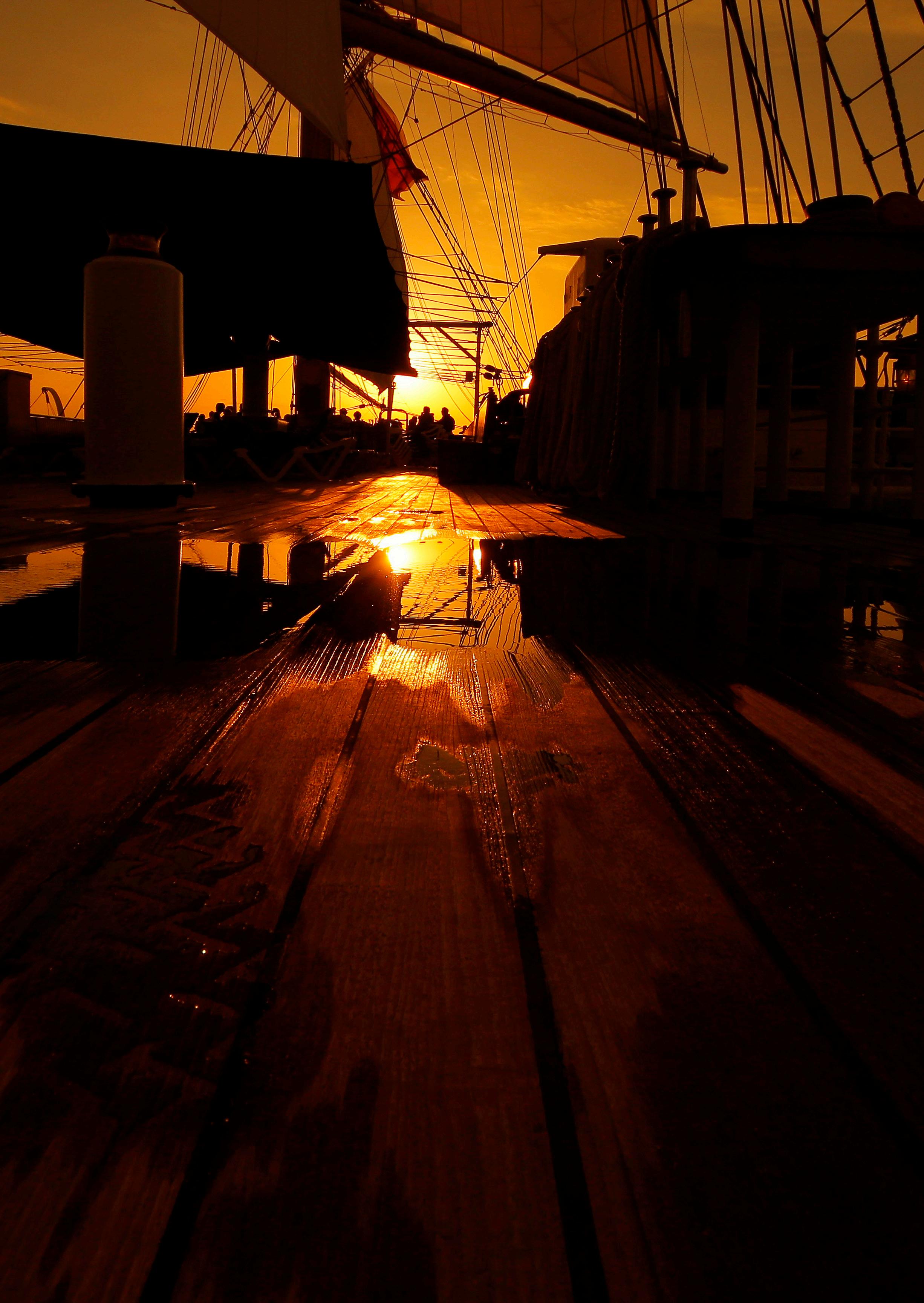








As I meandered the winding streets of the old town, Bari Vecchio, the sense of local pride and authenticity in this charming city radiated through every stone of the towering perimeter walls. Homemade bags of orecchiette, a traditional ear-shaped pasta, lined tables placed precariously on the cobblestones, and laundry waved gently from the balconies above. Ladies gossiped at tiny tables down narrow walkways whilst pig-tailed toddlers squealed in delight on tricycles. Within minutes of exploring, I immediately felt immersed in the everyday life of the Puglian locals.
Bari – the capital city of the Puglia region – is the starting point of our Southern Italian adventure and a perfect gateway to whitewashed towns, serene beachfronts and landscapes steeped in history. Bari itself offers two imposing main religious buildings – the 11th century Basilica di San Nicola and Bari Cathedral, otherwise known as San Sabino, a 13th century Romanesque church that poses dramatically near the beachfront. As day turned to night, we sat sipping Aperol Spritz in front of the cathedral as rugged local men puffed on cigarettes and laughed heartily at jokes I didn’t understand.
The following morning, after a restful night’s sleep at the clean and modern Bventuno Hotel, we were met in the hotel lobby by Francesco and Cosimo, our tour guide and driver for a day exploring the wider region. After a scenic drive through luscious countryside we arrived in Matera, a city on a rocky outcrop in the region
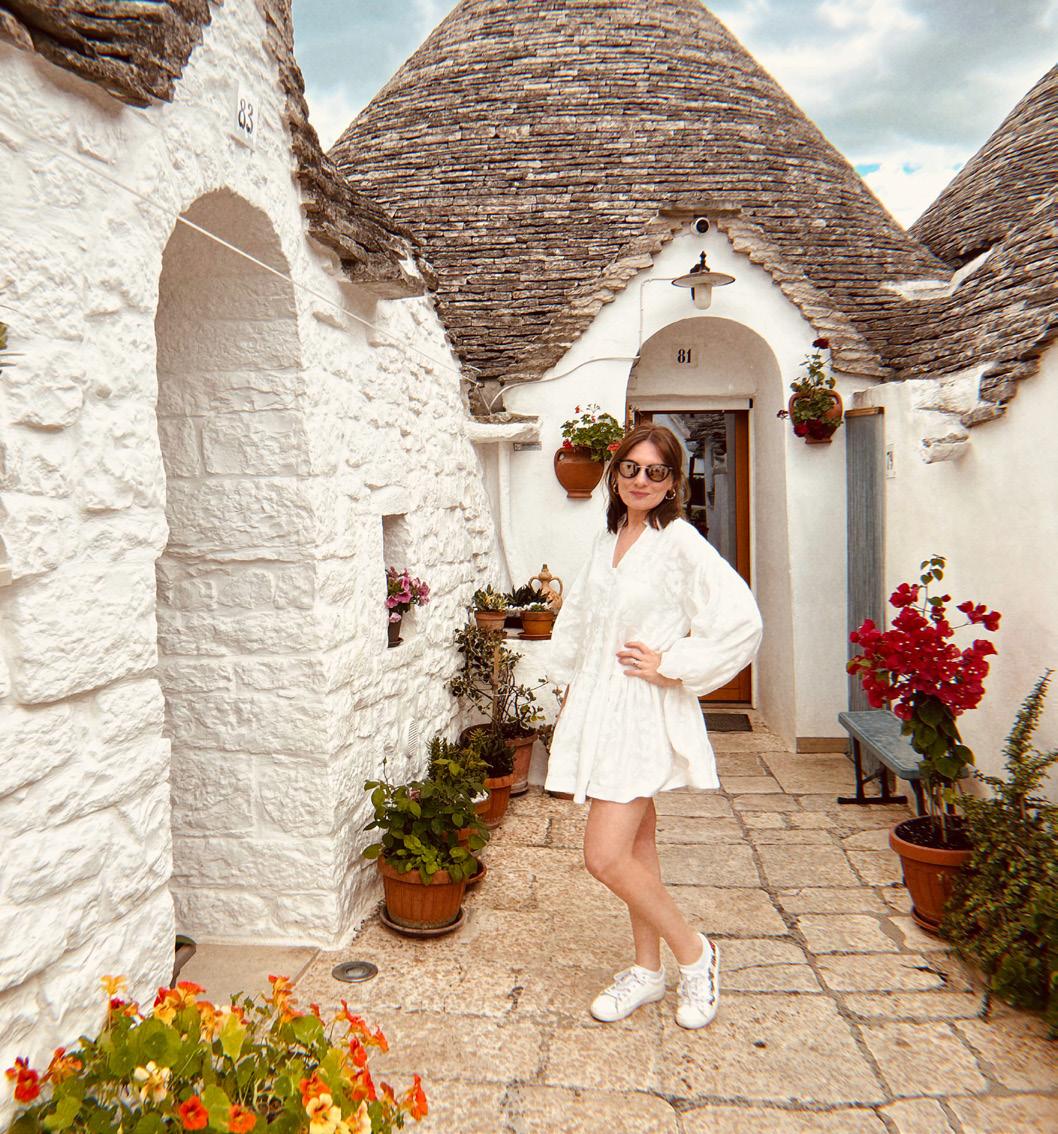
of Basilicata, a stone’s throw from the Puglian border. Matera is said to be the third oldest consistently inhabited city in the world, and once you see views of the ‘sassi’ – complex cave dwellings carved into the mountainside – it’s difficult to dispute this. The landscape is one of the most beautiful scenes I have ever witnessed. Limestone churches, monasteries and palaces balance on the edge of the ravine, rising above the caves like a protective guardian angel. This UNESCO-recognised city feels ethereal in a way I cannot explain – it’s no wonder Matera was chosen as a striking filming location for the opening scenes of 007’s No Time To Die.
After a delicious rustic lunch at 5 Lire, a charming yet understated pizzeria situated on the main piazza that offered covert panoramic views of the sassi through the terraced back doors, Cosimo drove us Eastwards to the next location. Alberobello is a must-see in Puglia- conical-shaped ‘trulli’ houses dating back to the mid-14th century were built without mortar, using limestone slabs to create an intriguing domed roof. Angelo - a beaming, bearded local - invited us into his family’s trulli to sip homemade red wine and marvel over the unique style of such a distinctive building. Whilst he doesn’t live there anymore, it’s incredible to stand in this time capsule and get a glimpse of family life was like within these homes. The scenes around me wouldn’t go amiss in a children’s fairytale book. UNESCO declared Alberobello a World Heritage site in 1996 and it is another must-see when visiting the region.
On the way back we took the coastal route for a quick stop at Polignano a Mare, where coloured fishing boats bobbed in the lapping ocean as the imposing Abbey of San Vito guarded the cove. Feeling like I had suitably dipped my toes into Puglia and the surrounding region, it was time to embark on the next part of the adventure.
The following morning a seamless four-hour train journey from Bari Centrale train station saw us swiftly delivered at Rome Termini. Still awestruck by the views of cascading mountains and landscapes dotted with vineyards, we eagerly hopped on the next train offering an equally beautiful horizon that transformed from shades of green to blue hues as the sea came into view. Star Flyer’s recognisable masts peeked above the terminal like toothpicks as we caught our first exciting glimpse of her in the distance.
‘Welcome aboard!’ smiled the welcoming crew members greeting us at the top of the gangway, passing refreshing hand towels and a cocktail into my grasp within seconds. With 131 guests checked in and safely on board, we soon departed Civitavecchia under a clear, starry sky. A flock of gulls
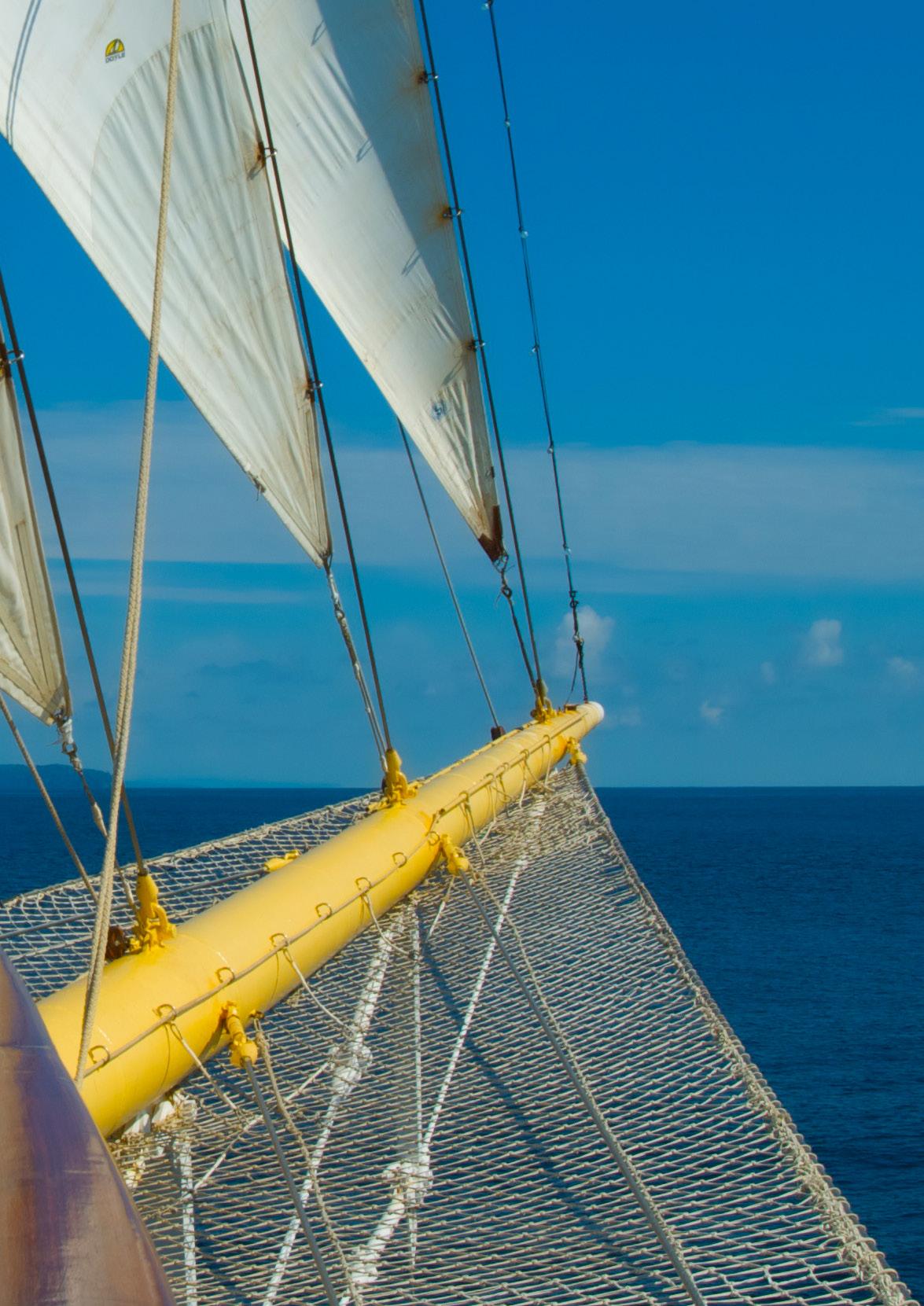
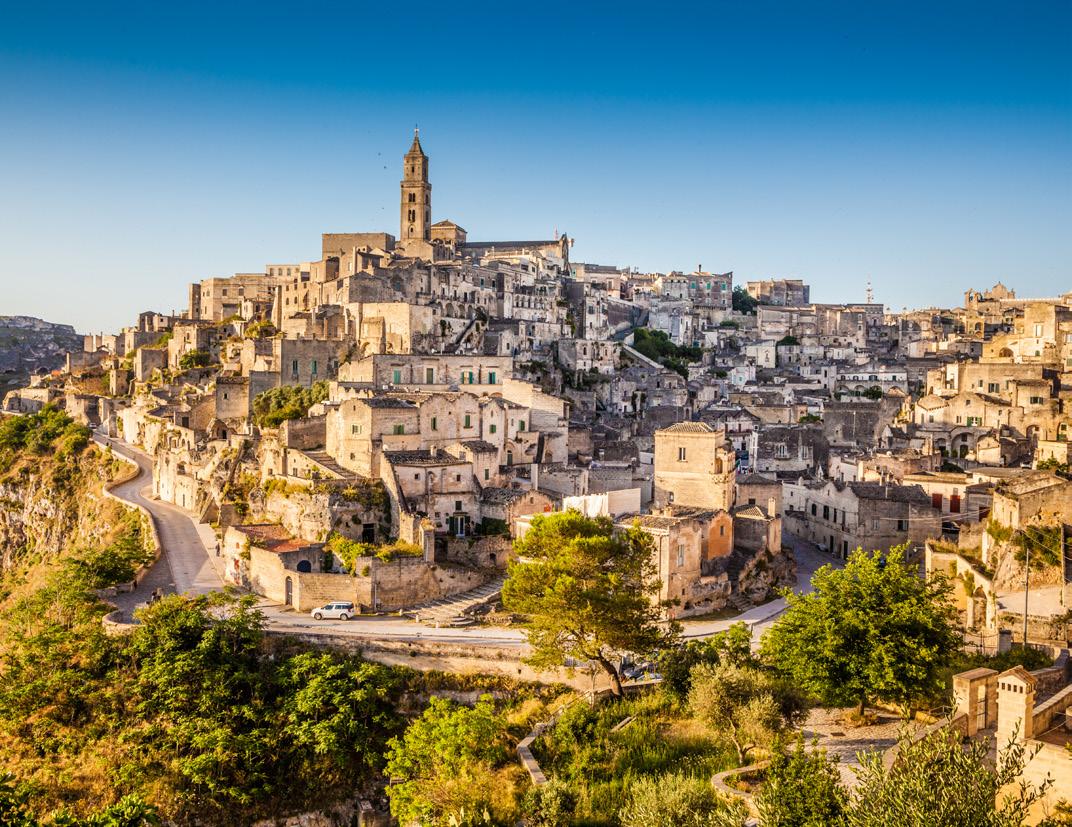
dramatically followed us out of the harbour- a fitting enhancement to an already theatrical exit as Vangelis’ Conquest of Paradise serenaded us whilst we stood between the lapping ocean and fluttering sails.
We spent the following day sailing the calm waters of the Tyrrhenian Sea as the sun beamed down on the teak decks and skilled deckhands maneuvered the ropes around brass bollards. Daring guests balanced precariously over the sea on the bowsprit net whilst other adventurous folk donned harnesses to scurry up to the ship’s Crow’s Nest for an incredible birds-eye view of Star Flyer. That night, a crew fashion show at the Tropical Bar delighted guests who already felt familiar after just one full day on board.
After a restful night and a delicious breakfast in the bright and airy dining room, illuminated by the daylight bursting through the midship pool down into the atrium below, we arrived into Lipari. The largest of the Aeolian Islands, and a mere stone’s throw from Sicily, Lipari is just 37 square kilometres in size but not lacking in charm and character. Lipari is a relatively undiscovered tourist destination, and after a short tender ride to the shore we were deposited amongst a typical Monday morning on the island. Local fishermen tidied frayed ropes as they returned from early-morning trips in their splintered wooden boats, whilst basket-bearing ladies shopped for fresh bread and fruit. Hand painted signs outside ice cream parlours invited us to try ‘granita’, a Sicilian semi-frozen dessert described as ‘neither ice cream, nor sorbet, nor slushie’.
We spent the evening sailing past Stromboli, which sprayed fireworks into the black sky every fifteen minutes as onlookers with poised cameras gasped in awe. I noticed one guest had decided to sleep under the stars that night – sometimes nature’s own shows triumph over anything else.

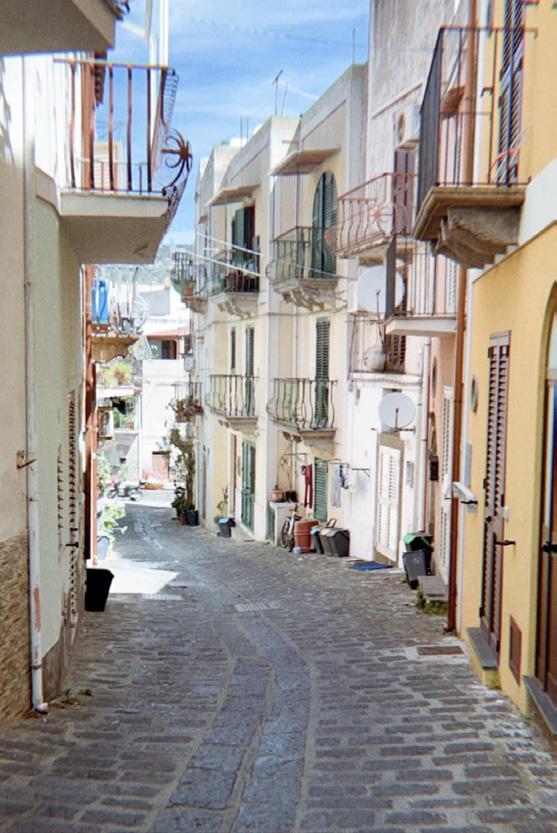
I watched the sun rise as Messina ascended slowly over the horizon. This Sicilian harbour city is best known for the Duomi di Messina, a Norman cathedral with 54 mechanical figurines that put on an incredible display at noon every day. Silence filled the square as Ave Maria engulfed the air, whilst a roaring, flag-bearing lion slowly leapt up on his hind legs and bronze sculptures danced below. Stood amongst thousands of silent onlookers, I unexpectedly felt tears stinging my eyes. In a fitting continuation of unostentatious spectacles, Star Flyer’s own light show on the sails that evening was a memorable end to the day. The vast canvas changed from white, to yellow, to lilac, red and blue whilst guests danced beneath them dressed all in white.
A morning of sailing preceded our arrival into Amalfi. Grey clouds overhead dramatised the scene as cascading, pastel buildings appeared ahead. Despite the drizzle, the town looked postcard-perfect and we were soon sipping Limoncello Spritz next to the harbour without a care in the world. That evening, a local folk band embarked the ship to give us a flavour of traditional music from the area, and before I knew it I was waving a tambourine and dancing with them.
The following morning was bittersweet, as our arrival into Sorrento also marked our disembarkation and the end of this adventure. Before our taxi’s arrival, we climbed the stone steps to the town that’s perched 160ft atop a mountain and strolled through the warren of walkways that make up the historical centre. Café owners were setting up for the lunchtime rush and locals sold pasta and sweet treats from grotto-style shops. We laughed at head-sized lemons and made our way back to catch our transfer to the airport. La Dolce Vita is a timeless philosophy that invites us to infuse our lives with sweetness, balance and mindful appreciation, and without a doubt I have done just that.
